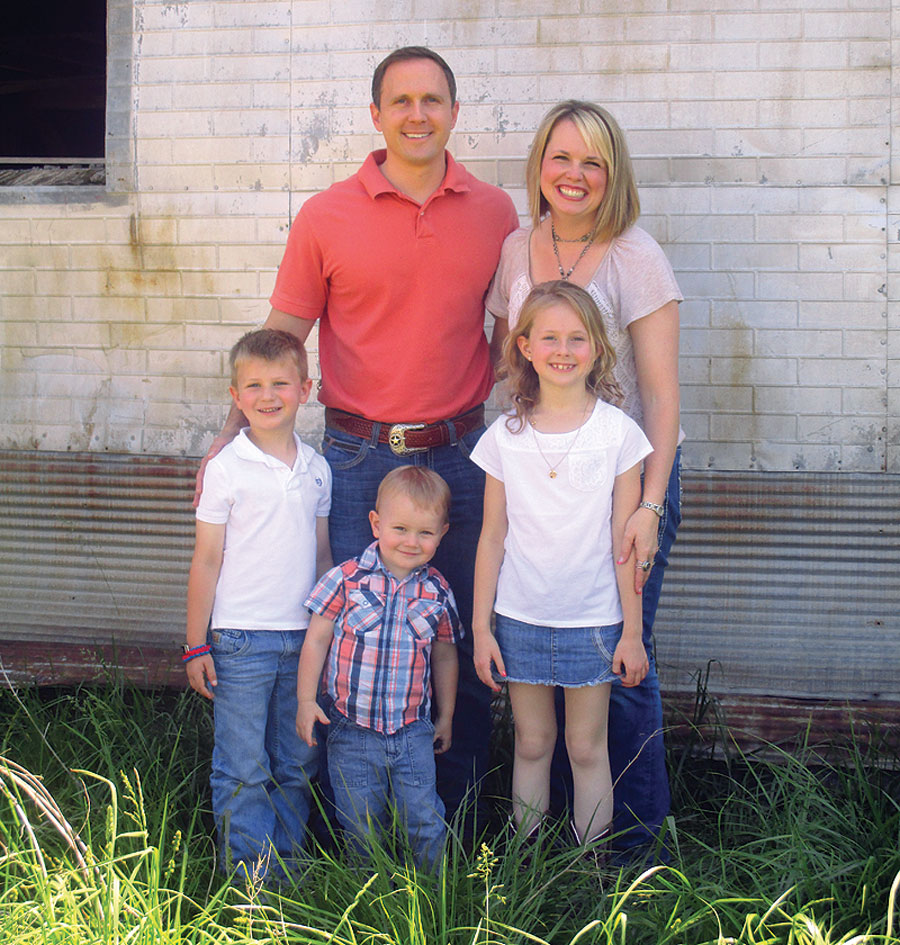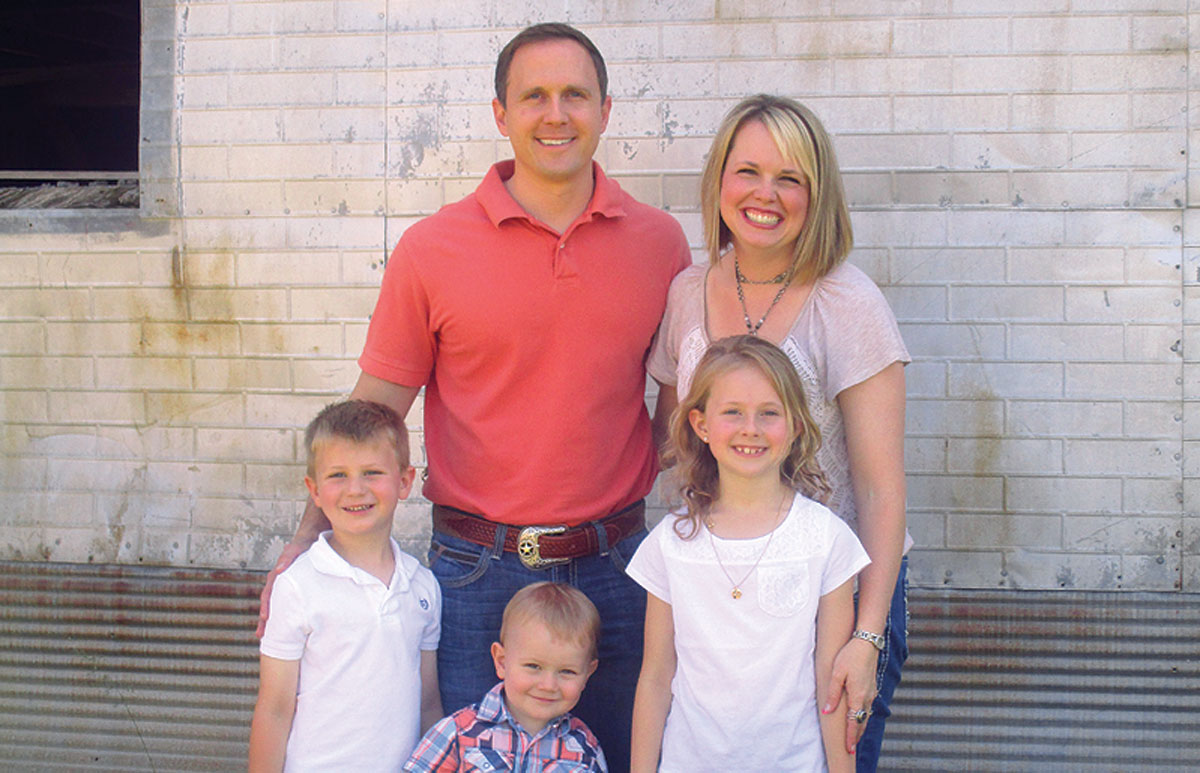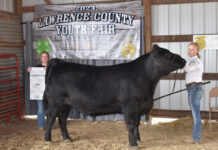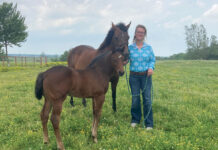 Some folks never find their true calling in life. Some wonder from this project to that, never really feeling passionate about anything particular. On the other hand, once in a while a couple like Garrett and Jennifer Hawkins comes along.
Some folks never find their true calling in life. Some wonder from this project to that, never really feeling passionate about anything particular. On the other hand, once in a while a couple like Garrett and Jennifer Hawkins comes along.
They are clear and focused on their calling to be a strong united voice for agriculture and to ensure that the traditions of Missouri Agriculture continue for, not only their own children, but all farm and ranch families.
In the spring of 2017, Garrett was approached to join the Missouri Department of Agriculture team as deputy director. He said it was one of the hardest career decisions he has ever had to make. “Jennifer and I took it from the perspective of…rooted in prayer, when God calls you answer,” Garrett said. “The future is always uncertain, but there is a tremendous opportunity for Missouri agriculture and I wanted to be a part of making our industry and state stronger.”
Prior to his new appointment from Gov. Eric Greitens and Director of Agriculture Chris Chinn, Garrett served as the Missouri Farm Bureau Director of National Legislative Programs.
He says he was a “home-grown” staff member at MFB. Beginning during his time at Missouri State University (formally knows as Southwest Missouri State), Garrett has been involved in every program MFB offered, serving as one of two youth ambassadors in 2000 and as the organization’s legislative intern in 2001.
“It’s been a ride during the past 15 years working on ag policy,” he said. “I have had the chance to work with farm and ranch families in every county in this state and the opportunity to work on issues that impact people’s lives, from crop insurance to taxes, to health care, to environmental regulations. Given that all of my family is involved in production agriculture, I took my responsibilities very seriously, because the issues I worked on everyday also affected my family.”
Garrett grew up in Appleton City, Mo., with siblings Kara and Eric. His parents, Jimmy and Anita Hawkins, as well as extended family, raised beef cattle, hay, soybeans, wheat and seed crops.
“Like so many in agriculture, everything on the farm was a family affair,” Garrett said, from putting up hay to putting up sweet corn.
Also, like most who grow up on the family farm, Garrett had the opportunity to learn from the generations before him. He recalled how his grandpa Jim Hawkins loved picking up fescue on the John Deere 45 combine and the many memories of days working cattle. The lessons from family didn’t stop as Garrett developed his skills and status as an advocate of agriculture. Garrett will never forget Sunday afternoons sitting around the kitchen table with extended family debating issues with his grandpa Warren Stephan.
“He would remind me to remember where I came from and I carried that with me as I traveled to Washington D.C., to be a strong voice for the farmers and ranchers of this state,” Garrett said.
Garrett has looked to several professional mentors, as well, including: Dr. Anson Elliott, retired Missouri State University Darr School of Agriculture director; Dan Cassidy, MFB Chief Administrative Officer; former MFB President Charlie Kruse; and current MFB President Blake Hurst.
Garrett said the greatest lessons have come in seeing how each of them interact with others.
“They all have a passion for serving others and are known for doing the right thing even when making a decision may not be the popular one. They have the character and integrity to do what is right for the best interest of people and agriculture.”
During his time at MFB, Garrett gained the attention of legislators and agriculture policy makers, as well as the reputation of being the best at what he does. However, maybe more importantly, he caught the attention of a young lady who shared his passion of agriculture and has put her heart and soul into the future of the industry, his now wife, Jennifer.
Jennifer grew up on a dairy farm in Sarcoxie, Mo., with her parents Richard and Anita Bloss, and siblings Mike, Jeff and Kristin. Her family had a registered Jersey dairy cattle operation, as well as a commercial beef cattle operation. Jennifer says she enjoyed growing up outside and recalls that the most important family decisions were always made with discussions either in the milking parlor or in the feed room.
Beginning at a very young age, Jennifer began taking an active role in the dairy farm from getting up at 4:30 a.m. to help with milking and bottle calves to taking charge of the paperwork for the herd.
“Mom was a school teacher so our whole lives revolved around farm, church and school,” Jennifer recalled.
In February 2016, Garrett and Jennifer knew God was leading them back to the farm. Jennifer said she wanted a place where they felt at home. Opportunities presented themselves for the transition back to the Hawkins family farm. Garrett continues to work in Jefferson City; balancing family and work is a team effort with Jennifer.
Although work demands limit physical work on the farm, Garrett and Jennifer have taken on a supportive role to Garrett’s parents and siblings. Together, they are asking themselves “what does the farm look like five years from now?” Garrett said it is time to be involved in the process and it is important to be here to be involved. One of the most important aspects of being involved is to allow the three Hawkins children, Adelyn (8), Colton (5) and Tate (2), to have the opportunities that their parents had to learn the values of hard work and commitment that agriculture provides.
Jennifer said she is frequently asked how she and her family are adjusting to life in the small town. She described the “pure joy” she has seen in her children as they are able to ride their bikes and participate in life on the farm. Adelyn constantly asks, “Are you happy, Mom? Because, I sure am!”
When asked about the greatest challenges on the horizon, Garrett responded:
“Stepping into the role of deputy director there is a steep learning curve. I am learning day to day the operations of the department and managing my time so that I am meeting the needs of employees and serving the governor and Director Chinn to the best of my abilities.
“From a department leadership standpoint, I am most excited about working with Director Chinn and our team of 300 employees to figure out how we do a better job of serving, not only farmers and ranchers, but every Missourian impacted by our services when they pull up to the pump to put gas in the truck, purchase steaks at the meat counter, drive across the scale with a load of wheat, or weigh a bag of apples at the grocery store.
From a policy standpoint, the biggest challenge for agriculture continues to be communicating what we do, how we do it, and ultimately how it benefits consumers.
From a farm economy standpoint, continued low prices are taking a toll, particularly on those in the beginning years of their farming career. We also have to get a handle on the impact of recent floods and figure out how we can cooperate with federal and industry partners to help our farmers and ranchers recover.
“With challenge comes opportunities and there are farmers and ranchers in every county in this state that are optimistic about the future and are ready to work hard to make a difference. Director Chinn and I, with every action, will be guided by the question ‘have we moved the needle?’ Are we making a difference in the lives of those we serve? That will be the metric to determine if we have been successful.”
When asked what advice he would give to others who want to advocate on behalf of agriculture, Garrett shared:
“You have to be involved, step up and be unashamed when speaking up about the importance of agriculture. Be willing to work with others, not just with fellow like-minded individuals, but willing to form partnerships that can help move agriculture forward, your community forward and the state forward.
“Be a life-long learner, not just learning the issues, but learn the perspectives of others. When I work with young people to help them become ‘agvocates.’ I use the ‘learn, connect, share’ model. Learning issues and perspectives comes through listening. Find that common ground to form connections and build the bridge. Then you can share the story of agriculture. It’s really that simple.”







